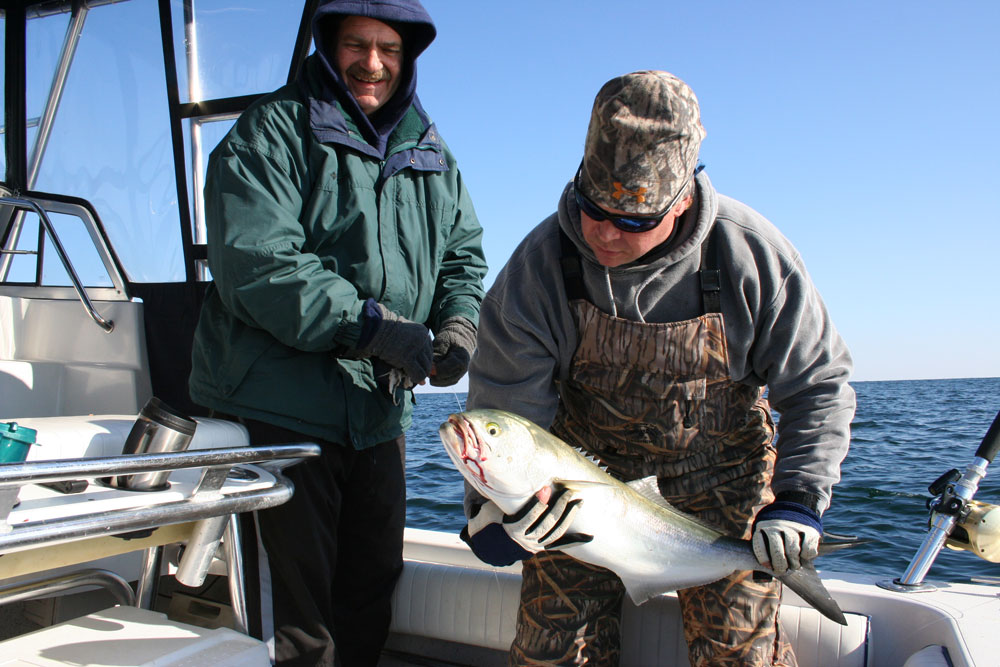Keep up with the weekly fishing reports on FishTalkMag, because late fall often give Mid-Atlantic anglers a shot at bluefish as they churn their way down towards southern waters. Whether they’ll pass by our coast early in November or weeks later is anyone’s guess—if they show up at all—but after the awesome spring bluefish run of 2017, it seems reasonable to hope they’ll make a showing this fall. Capitalize on the opportunity using these tactics:
- Anchor up at a shoal off the coast, and try chumming. The fish you see here was one of many caught one chilly day at the Jack Spot, about 22 miles from the Ocean City inlet. But many of the shoals and lumps closer to home provide an excellent shot at late season blues. Try to position your boat along the drop-off, and fish baits high in the water column. Standard rigs for these big choppers consist of an 8/0 to 9/0 hook with at least six inches of wire leader. Ground bunker is the chum of choice, and bunker chunks make for ideal baits. Strip line from the rod tip and let the chunks float back naturally, for maximum appeal.
- Troll the Beach, 100 to 200 yards outside the breakers. Often blues moving along the coastline will shadow land, corralling bait between the breakers and open water. When the fish take this path they’re often marked by flocks of working birds, and are best pursued by trolling. Large metal spoons, like #21 Tony Acettas and big Drones, are the name of the game. Run them in-line with a four- to eight-ounce torpedo weight and be sure to add a ball-bearing swivel, to prevent line twist.
- Hit the surf. This is more of a hit-or-miss method even when the blues show up farther out in the ocean, but when they do blitz the beach it can be a once-in-a-lifetime experience with fleeing bunker visible in the wash as 10-pound and larger predators chase them—sometimes right out of the ocean. Bring two rods, so you’re ready for the frontal assault but can also fish bait when things are a bit calmer.

Keep the first rod rigged with a heavy casting spoon like a Hopkins, and leave it sitting in a rodholder so you’re prepared for a sudden attack. Your second rod should be set up with a Doodlebug rig with wire leaders, baited with hunks of mullet or spot, and weighted down with a surf weight big enough to hold bottom in the waves. You can cast out and leave this line in the water while you wait for all heck to break loose. But be sure to use a live-liner or a light drag, because a chopper blue has the oomph to rip a sand spike right out of the beach and drag your rod into the ocean.
Bonus Tip: If the blues turn savage and you get lucky, you may even see bunker jumping out of the water and onto the sand. It does happen! In this case you can rig up with a bare hook and wire leader and—if you can stop your hands from shaking long enough—grab a flipping baitfish from the suds, then cast it right back out with a hook through its back.